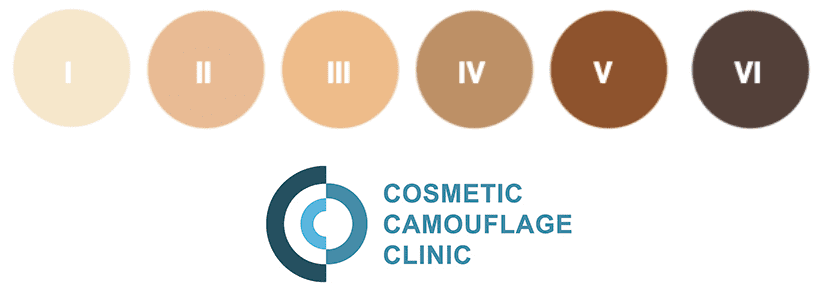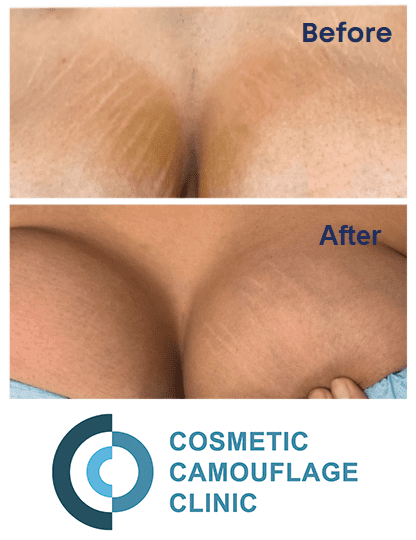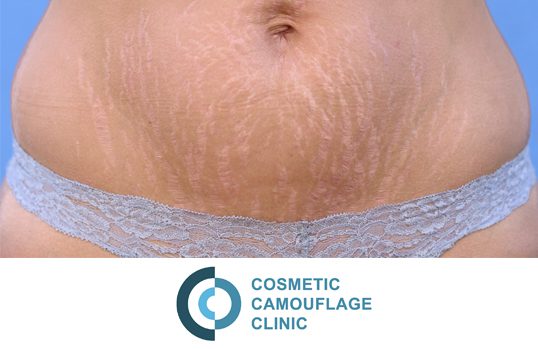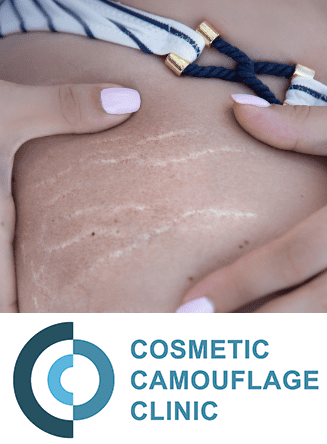BEST STRETCH MARK TREATMENT
INTRODUCING INKLESS STRETCH MARKS REVISION (ISR) TO PERMANENTLY IMPROVE THE LOOK OF YOUR STRETCH MARKS
We are pleased to introduce the latest technique to permanently improve the look of your stretch marks. Called Inkless Stretch Marks Revision or ISR, we believe this to be the very best stretch mark procedure.
What is Inkless Stretch Marks Revision?
ISR an effective, fast cosmetic procedure for stretch marks that works by creating small wounds in the skin that result in a channel for an all-natural serum to be absorbed into the skin. The procedure uses a rotary tattoo machine to stimulate the natural healing response in combination with an all-natural serum to further enhance the body’s production response. This combination treatment allows an improved absorption rate above topical applications and is more effective than just using dry needling/tattooing technique alone.
Other names that are used for this treatment include:
-
Inkless stretch marks treatment
-
Inkless stretch mark removal
-
Inkless stretch mark camouflage
-
MCA Needling – Multi-tropanic collagen actuation
-
Dry Tattooing
-
Collagen Induction Therapy
-
Medical Needling
Benefits of the Inkless Stretch Marks Revision Method
-
Fast and effective procedure to permanently improve the look of your stretch marks.
-
Almost all skin tones and stretch mark types can be treated.
-
All natural serums and vitamins used.
-
Minimal down time for healing.
-
Numbing cream used to reduce discomfort.
-
Just 1-4 sessions required.
Stretch marks are known medically as striae distensae. They are visible linear scars which develop in areas of dermal damage as a result of excessive stretching of the skin. Stretch marks develop when the skin stretches or shrinks quickly. The sudden change causes the collagen and elastin, which supports the skin, to rupture. As the skin heals from the change, stretch marks may appear.
Fluctuating hormones levels play a role in developing stretch marks, as not everyone develops them. If one gets stretch marks, it is usually during these times:
-
pregnancy
-
puberty (growth spurt)
-
rapid weight gain or loss
-
weight training with rapid muscle growth
What are the characteristics of stretch marks?
The first signs of stretch marks are reddish, purple, or dark brown lines, depending on your skin colour. Early stretch marks may feel slightly raised and can be itchy as well. Over time these marks fade and the narrow bands sink beneath the skin. The depressed skin tissue is often thinner and more fragile than the surrounding skin.
Other Stretch Mark Treatments on the Market
Home Remedies
1. Lotions
Home remedy lotions do not work to fade stretch marks. Researchers found that none of the stretch marks faded when you apply almond oil, olive oil, cocoa butter, or vitamin E into their stretch marks.
2. Sun Tanning
Sun tanning do not work to fade stretch marks. When you tan, stretch marks become even more noticeable because they don’t tan.
3. Self-tanner
Self tanners are lotions containing ingredients that react with the skin to produce an artificial suntan. Although they may help to camouflage the stretch marks, they cannot get rid of them or make them fade.
Topical Stretch Mark Treatments
1. Tretinoin
Tretinoin is a retinoid known as retinoic acid, it’s generic name for vitamin A. It can help make stretch marks less noticeable.
2. Retinol
Retinol is another type of retinoid. It can also help make stretch marks less noticeable.
3. Hyaluronic Acid
Hyaluronic acid is well known for its skin benefits, especially alleviating dry skin, reducing the appearance of fine lines and wrinkles and speeding up wound healing. It can help make stretch marks less noticeable.
Paramedical Treatments
1. Chemical Peel
2. Laser Therapy
3. Microdermabrasion
4. Radiofrequency
5. Ultrasound
AND OUR FAVOURATE – ISR: TATTOO NEEDLING + SERUM
1. Skin Needling
Skin needling is an effective method of stimulating the body’s ability to produce collagen, elastin and, for some, melanocytes. The degree to which the process will impact the body’s healing will vary depending on the techniques used. For example, a derma roller may not stimulate the same response as a rotary tattoo machine. We do not recommend skin needling by itself as an optimum treatment for revising stretch marks.
2. Camouflage Tattooing
Camouflage tattooing is the placement of ink and/or pigments into the stretch marks to match the colour of the surrounding skin area. Since ink is placed into the dermis using tattoo needles, the benefits of skin needling may occur, however this is not the primary purpose of tattooing.
3. Inkless Stretch Mark Revision
As mentioned above, we believe ISR is the best treatment to permanently improve the look of your stretch marks. By using a combination of dry tattoo/needling technique with an effective scar serum, your stretch marks will look noticeably better in just a few sessions.
INKLESS STRETCH MARK REVISION VS CAMOUFLAGE TATTOOING
When should you use Camouflage tattooing and when should you use ISR?
ISR is the best treatment when the stretch mark colour is close to the surrounding skin area. IRS is ideal for any width of stretch mark but can also be used for stretch marks that are too wide or textured for camouflage tattooing. Tattoo camouflage is ideal for stretch marks that are noticeably lighter in colour than the surrounding skin colour. Also stretch marks should be no wider than 3/16″ for cosmetic camouflage. Cosmetic camouflage can be used in cases where the stretch mark is extremely hypo pigmented and desired results are unlikely to be achieved with ISR alone.
Who Is a Good Candidate for Inkless Stretch Marks Revision?
-
All ages, ethnicities are potential ISR patients
-
IRS can be done on any stretch mark on the body
-
Stretch marks should not be red, pink, or purple, which indicate it is still healing. Once formed, stretch marks take about one year to heal, unless there is still weight gain happening in which case you need to wait until the stretch marks are healed.
-
You do not need to be untanned to do the treatment
-
If your skin colour is Fitzpatrick 4/5/6, clients are required to do a test patch to determine if excessive melanin response may occur resulting in hyperpigmentation (prone to darkening of skin) of the treatment area. Hypopigmented (prone to lightening of skin) clients are ideal for ISR. Hyperpigmented clients should not be considered for ISR.
Who should not do the Inkless Stretch Marks Revision?
-
Pregnant women
-
Chronic skin conditions, infections, or skin cancer in the area being treated
-
Prone to keloid scars (raised dark scars. Are genetic, particularly common in people of African descent)
-
Prone to hyperpigmentation
-
Recent use of Accutane (no Accutane for 6 months prior to treatment)
-
If your stretch marks are significantly darker than the surrounding skin
Should you do a Patch Test?
If you are a Fitz 4/5/6, or you think you are prone to keloid scarring, or hyperpigmentation, then we require you to do a patch test. The purpose of the patch test is to determine if PIH (Post Inflammatory Hyperpigmentation) is an outcome; and further determine if the PIH protocol will allow for desired results.
How do you know if you have hyperpigmentation? Usually, dark marks will appear after you have pimples, scratches, or other injury with hyperpigmentation as part of your healing process.
NOTE: Stretch marks scars will not completely go away. ISR will only improve the appearance and texture of the area being treated.
What is the Fitzpatrick Scale?

Type II – usually burns in the sun, has freckles and is difficult to tan. Common ethnic background: Norther European.
Type III – tans after several burns and may freckle. Common ethnic background: German.
Type IV – tans more than average rarely burns, and rarely freckles. Common ethnic background: Mediterranean, Southern European, Hispanic.
Type V – tans, rarely burns, and no freckles. Common ethnic background: Asian, Indian, African.
Type VI – tans with ease, never burns, deeply pigmented, and never freckles. Common ethnic background: African.
How long does the procedure last?
Providing the client doesn’t gain or lose a large amount of weight and remains in similar health as when being treated, the benefits of the treatment can last for many years or even permanently.
What is in Your Serum?
-
Our Scar Treatment Oil with 2% retinyl ester, vitamin C and vitamin E are incorporated into a non-comedogenic base that work together to improve the appearance of old and new scars, stretch marks, acne scars and other areas of skin discoloration.
-
This gentle yet highly effective formulation delivers all the benefits of retinol without irritation due to the hydrating properties of oil, making it suitable for use on discoloured and scarred areas of the face and body and suitable for all skin types.
-
Vitamin C in the form of Ascorbyl Isostearate brightens skin while fighting acne bacteria to prevent new spots and scars from forming. Vitamin C has been shown to inhibit the generation of melanin and accelerate the synthesis of collagen.
-
Jojoba oil and squalane emolliate without blocking pores.
-
Free of parabens, silicones, PEGs, SLS, SLES, and mineral oils. Vegan and cruelty-free.
-
Nourishing yet light and dry, it absorbs completely into skin.
What to Expect Post-Treatment
Day 1-4
-
Redness, swelling, tightness, feeling of being sunburnt
-
Avoid all things hot: sauna, hot tub, sweating etc.
-
You can shower 12 hours after procedure
-
Apply CeraVe Moisturizing Cream ($29.38 on Amazon.ca) twice a day
Day 3-7
-
Area will become flakey and some small scabbing (do not scratch or pick)
-
Continue to apply CeraVe Moisturizing Cream twice a day
-
Always use sunscreen when treated areas are exposed to the sun
How Many Sessions Do I Need?
-
You often see as much as 60-70% improvement after the first session.
-
Number of sessions required between 1-4 sessions.
-
On average most patient do 2-3 sessions.
-
There is a 6-week healing time between sessions.
-
On darker skin types you may need 3-6 months between sessions due to hyperpigmentation.
PRICING
Pricing is based on body part: $497 per body part:
-
Arms
-
Upper thighs
-
Buttocks
-
Calf and behind the knees
-
Stomach
-
Breasts
-
Back/Torso
10% Off for patients receiving ISR on multiple body parts.
There may be a small increase/decreased on pricing for patients with larger/smaller body parts.
To book a free online/phone consultation, please visit https://cosmeticcamouflage.com/contact/





